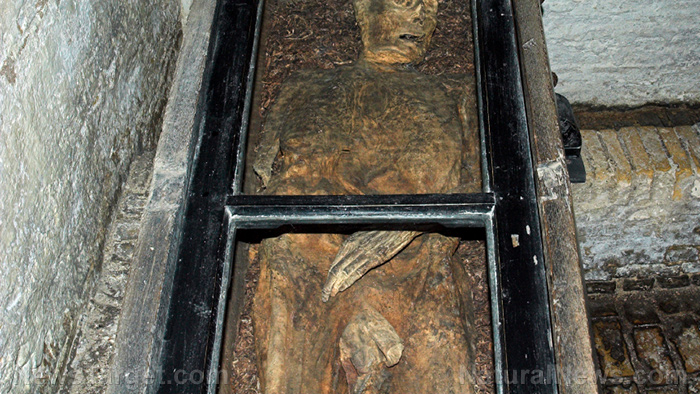
This finding, published in the journal Nature, could rewrite the currently accepted narrative based on the "Clovis first" theory. According to this account, Clovis hunter-gatherers are the first to occupy North America. They crossed the Bering Strait land bridge that is now submerged in ocean waters. This occurred just a short time after the Last Glacial Maximum, a period during the last Ice Age where ice sheets were at their peak and sea levels were 400 feet lower than they are today.
But evidence from Chiquihuite Cave argues that humans arrived in North America two times earlier than the Clovis people.
"Chiquihuite's main contribution is that it brings you another tiny light, another tiny signal, that there is something there," said Ciprian Ardelean of the Autonomous University of Zacatecas. He has been leading excavations in the cave since 2011.
Artifacts suggest earlier human occupation of North America
Ardelean and his colleagues found tools such as blades, projectile points and flakes that have never before seen in the Americas. The team believes that these implements were brought into the cave by a group of humans.
They also found about 200 specimens that are below a layer corresponding to the Last Glacial Maximum, suggesting humans were present in North America well before Clovis.
The researchers aimed to reconstruct the environment that the humans possibly lived in and put a date on when they occupied the site. They developed a chronology of more than 50 radiocarbon and optical dates and combined them with the archaeological evidence.
Results show that humans inhabited Chiquihuite as early as 33,000 years ago until the cave was sealed off at the end of the Pleistocene period around 12,000 years ago. (Related: Researchers discover ruins of lost colonial tavern in North Carolina: Cache of artifacts is a "time capsule" of history.)
The team also discovered charcoal bits throughout the layers of sediment. While they could be burned either by human hands or in natural events, radiocarbon dating shows that they are about 12,000 to 32,000 years old.
As to why humans would choose the cave given its inhospitable conditions, the team ran some tests on plant samples from 31 DNA extractions. They found that the cave was once much greener and wetter -- a shifting landscape of forests and grasslands.
Coastal travel into North America
Archaeologists from the University of Oxford Lorena Becerra-Valdivia and Thomas Higham conducted separate research, also published in the journal Nature.
They were part of the earlier study, and this time they examined the wider pattern of human occupation across North America and Beringia, the ancient land bridge connecting America to Asia.
They analyzed hundreds of dates obtained from 42 archaeological sites in North America and Beringia, including Chiquihuite Cave, through a statistical tool called Bayesian age modeling.
Results also showed there were humans in North America before, during and immediately after the Last Glacial Maximum. The team argues that arrivals predating the Clovis people might have traveled along the coast, as inland travel would have been impossible at the time. Populations would only begin to spread throughout the continent much later when global temperatures rose -- around 14,700 years ago.
The researchers also noted that the three major stone tool traditions in the wider region started around the same time. This coincided with an increase in archaeological sites and radiocarbon dates from those sites, as well as genetic data pointing to marked population growth.
Human expansion in the region appears to play a significant role in the decline of large mammals such as horses, camels and mammoths. The researchers plotted the dates of the last appearance of the mammals and found they largely disappeared within this, and a succeeding, colder period. However, they admitted that faunal extinctions could also be due to climate change.
These studies present a radically different view from the widely accepted Clovis hypothesis. Unsurprisingly, they are met with skepticism by several leading authorities. Some experts question whether the excavated tools were actual human artifacts or merely shaped into sharp-looking objects by natural processes.
Other signs of human occupation are also absent, such as human bones or hearths. And the tools that the team found in the Chiquihuite Cave appear very different from anything anyone has known before. They don't seem related to previous archaeological finds.
Still, it's hard to completely dismiss these recent findings. The picture of America's first settlement may be more complex, as Ardelean likes to remind his team.
Chiquihuite team member Devlin Gandy added, "We need to re-examine what we think we know about the peopling of the Americas, and we need to be open to a much longer time span.”
Sources include:
Please contact us for more information.























